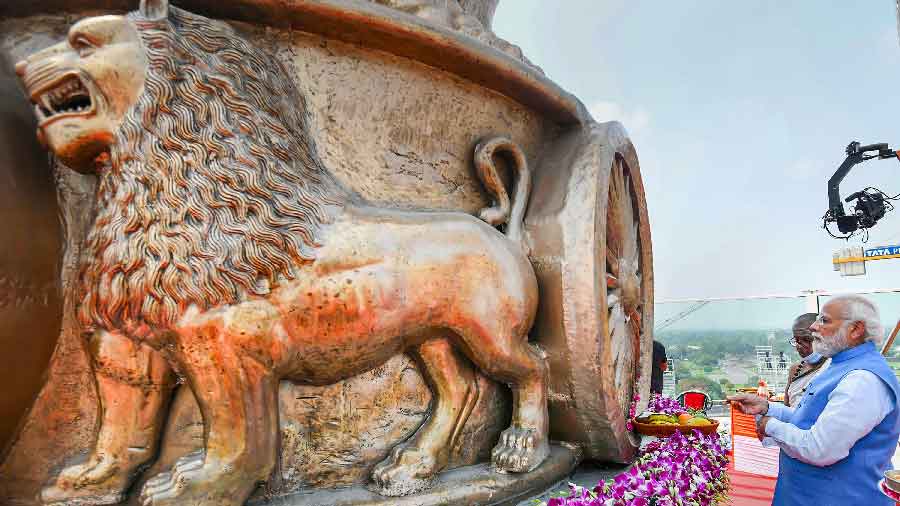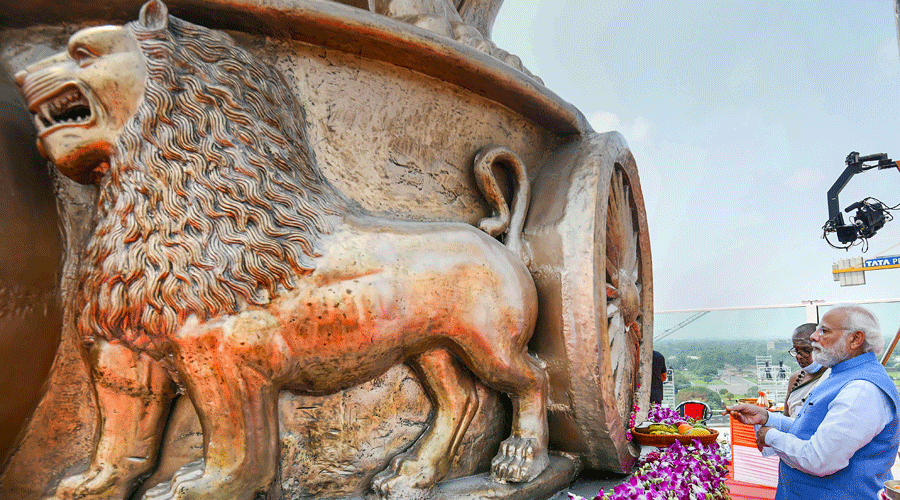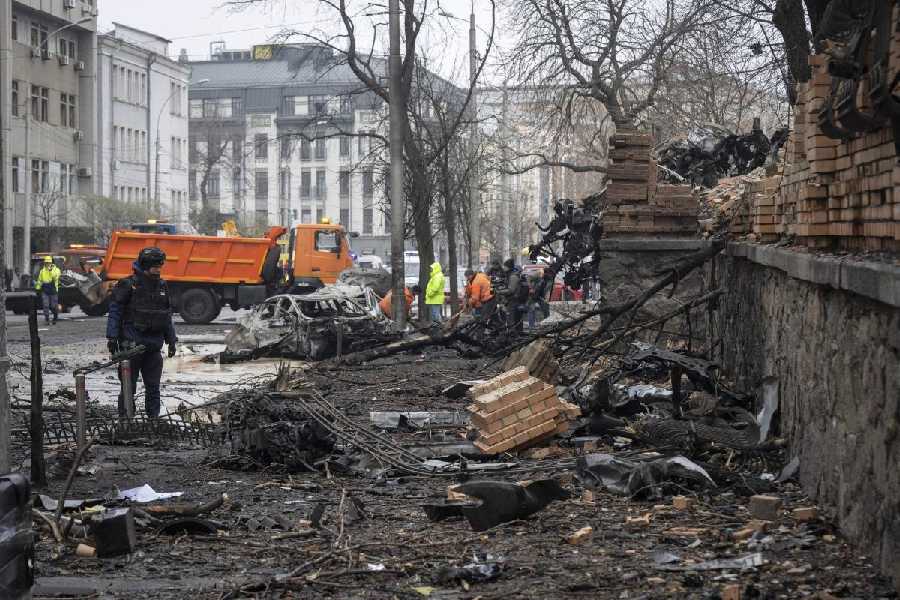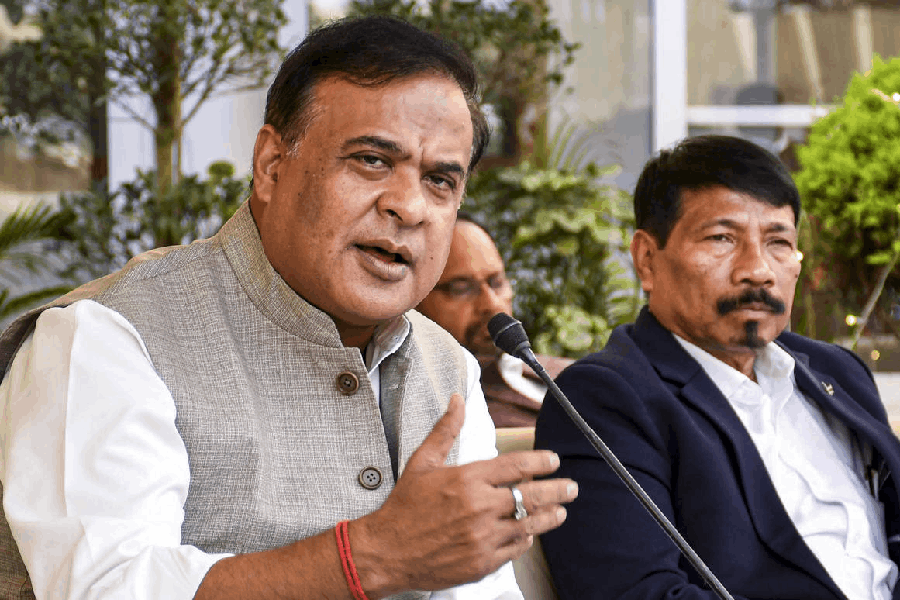Eminent art historian R. Siva Kumar on Wednesday said the national emblem cast atop the new Parliament Building had stylistically deviated from the original Ashoka’s lion capital at Sarnath.
“The original structure has a very interesting harmonious combination of realism and decorativeness but it is totally absent in the new one,” said Siva Kumar, a former professor of Visva-Bharati.
Siva Kumar’s comment has given a new dimension to the objections raised by Opposition parties and social activists who have accused the Narendra Modi government of distorting and insulting India’s national emblem. They had pointed out that the emblem cast inaugurated by Prime Minister Modi on July 11 was “visibly snarling”.
According to the art historian, the proportion of face and eyes of the lions has been changed compared to the lions in Sarnath.
“Although we have to see it from exact angles, it is clear the style of the lions has been changed. There is a deviation in proportion of face and eyes compared to the originals in Sarnath. The main thing is the style of the mane of the lions has been changed. The eyes of the lions appear bigger in the Ashoka’s pillar at Sarnath,” the art historian added.
Siva Kumar had taught in Visva-Bharati’s Kala Bhavan for over four decades and is one of the eminent teachers in the art school in Santiniketan with a vast contribution to research on Indian contemporary art and paintings by Rabindranath Tagore. He is also a well-known art critic, curator and author on multiple books on the arts.
He has curated major exhibitions across the country and globe, including “The Last Harvest: Paintings of Rabindranath Tagore” that was held at 10 major museums in the world including Asia Society in New York and the Victoria and Albert Museum in London.
He said the government had to be more careful in making of the national emblem.
In the backdrop of the controversy over the new large bronze cast of the national emblem, many professors and teachers in fine arts in Santiniketan recalled the work of Nandalal Bose, the eminent artist of Tagore's school of art who supervised the design of the emblem used in the Indian Constitution.
“Nandalal Bose had sketched the design of Ashokan pillar included in the Indian constitution. The design by Bose and his team was accepted and placed in the first place of the Constitution. The design of that national emblem is officially used in stamps and other government papers of the country. Despite it being a two-dimension replica, copied from the three-dimension emblem of Sarnath, there was no question of distortion from its original, said an art teacher in Visva-Bharati.
Bose had supervised the design of the national emblem with the help of five students from Santiniketan following an invitation of the government of newly independent India.
Dinanath Bhargava, one of the five students of Bose, had sketched the lions then
“Bhargava had recalled to his close associates and journalists that he had moved to Calcutta Zoo from Santiniketan repeatedly to study the exact moods of lions,” said an art teacher in Santiniketan.
Historian and former Visva-Bharati VC Rajat Kanta Ray explained why the lions in original emblem were non-violent. “The Indian national movement led by Mahatma Gandhi was one of non-violence…. The Constitution emerged out of the (non-violent) nationalist movements and reflected the ideas expressed therein. The ideas did not belong merely to Mahatmaji but the entire national movement and Indian nation between 1920 and 1947. The current lion symbol is out of tune with the history of the national movement,” said Ray who has specialised in Indian modern history.
“The lions in both Ashoka’s pillar at Sarnath and those designed under the supervision of Nandalal Bose sent a message of non-violence while the new ones set atop the parliament building send a message of violence,” he added.











